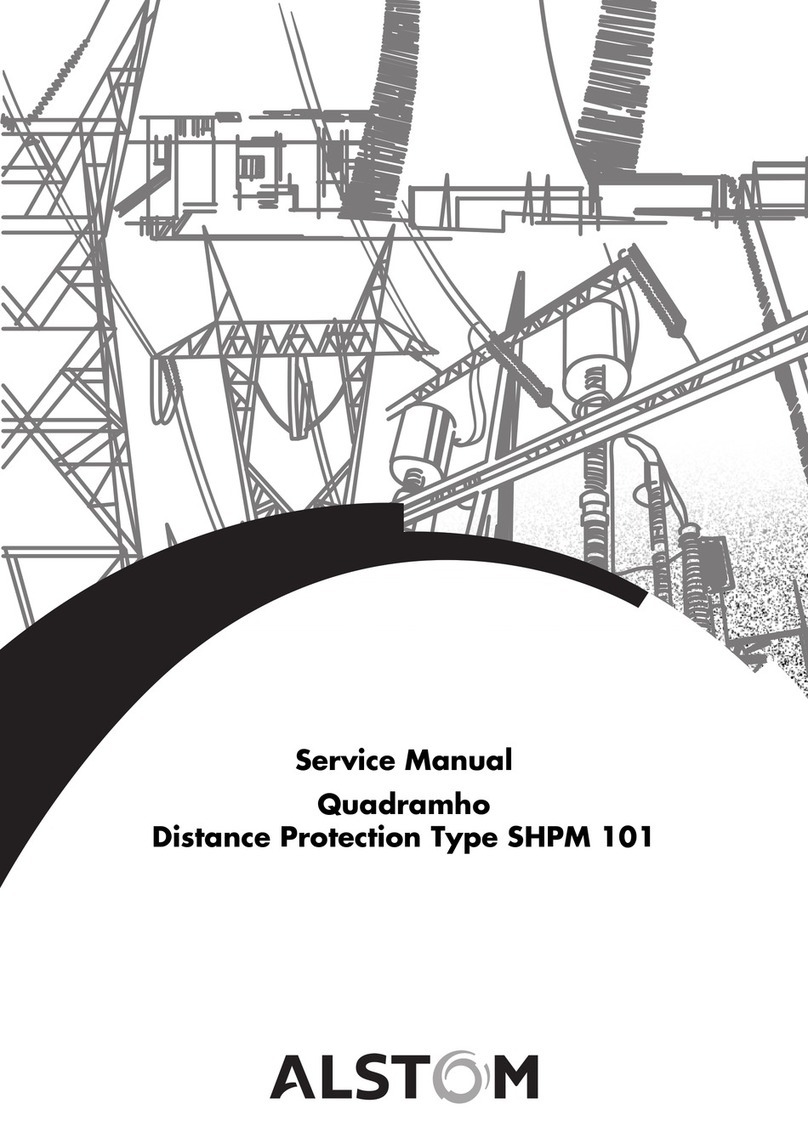P12y/EN FT/D22 Technical Guide
User Guide
Page 4/108 MiCOM P125/P126/P127
2. PASSWORD
2.1 Password Protection
Password protection is applicable to most of the relay settings, especially to the
selection of the various alarm thresholds, trip thresholds, communication parameters,
allocation of logic inputs and outputs.
The password consists of four capital characters. When leaving the factory, the
password is set to AAAA. The user can define any combination of four characters.
Should the password be lost or forgotten, modification of the stored parameters is
blocked. It is then necessary to contact the manufacturer or his agent and a stand-by
password specific to the relay concerned may be obtained.
The programming mode is indicated with the letter "P" on the right hand side of the
display on each menu heading. The letter "P" remains present as long as the
password is active (5 minutes if there is no action on the keypad).
2.2 Password Entry
The input of the password is requested as soon as a modification of a parameter is
made for any one of the six/eight menus and the submenus. The user enters each of
the 4 characters and then validates the entire password with 5.
After 5 seconds, the display returns to the point of the preceding menu.
If no key is pressed inside of 5 minutes, the password is deactivated. A new password
request is associated with any subsequent parameter modification.
2.3 Changing the Password
To change an active password, go to the OP. PARAMETERS menu and then to the
Password submenu. Enter the current password and validate. Then press 5and enter
the new password character by character and validate the new password using 5.
The message NEW PASSWORD OK is displayed to indicate that the new password
has been accepted.
2.4 Displays of Alarm & Warning Messages
Alarm messages are displayed directly on the front panel LCD. They have priority
over the default current value. As soon as an alarm situation is detected by the relay
(threshold crossing for example), the associated message is displayed on the MiCOM
relay front panel LCD and the LED Alarm (LED 2) lights up.
The alarm and warning messages are classed as follows:
Alarm messages generated by the electrical power network.
Warning messages caused by hardware or software faults from the relay.
2.4.1 Electrical Network Alarms
Any crossing of a threshold (instantaneous or time delay) generates an "electrical
network alarm". The involved threshold is indicated. Regarding the phase thresholds,
the phase designation (A, B or C) is also displayed.
If several alarms are triggered, they are all stored in their order of appearance and
presented on the LCD in reverse order of their detection (the most recent alarm first,
the oldest alarm last). Each alarm message is numbered and the total stored is
shown.
The user can read all the alarm messages by using 1.




























